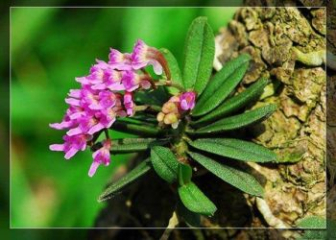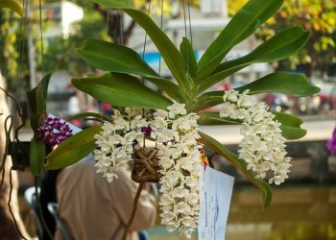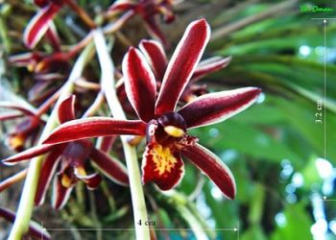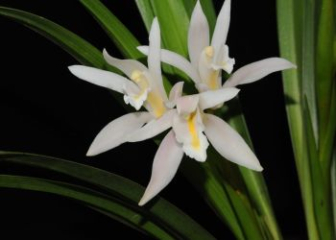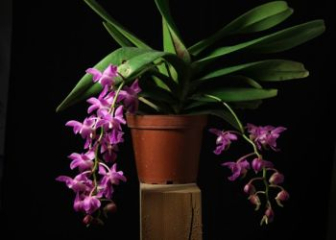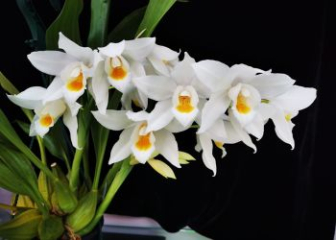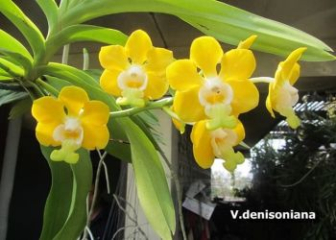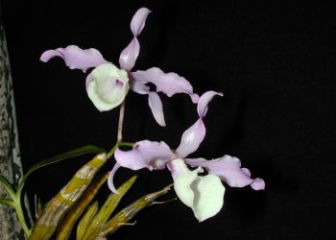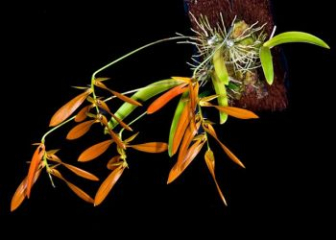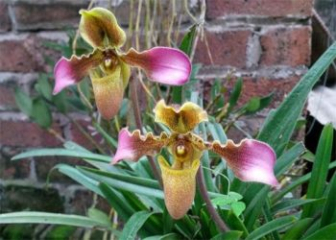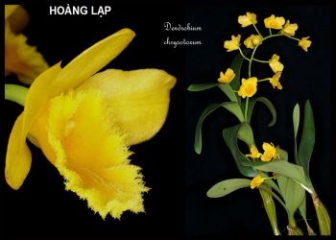Vietnamese Paphiopedilum - Endemic orchid species in Vietnam's limestone mountains
Blog | by
Vietnamese Paphiopedilum (Paphiopedilum vietnamense) - A rare wild orchid species, endemic to Vietnam, with a gentle, elegant pink color and unique flower shape.
Vietnamese Paphiopedilum (scientific name: Paphiopedilum vietnamense) is a masterpiece of the limestone mountains of Northern Vietnam, not only making orchid enthusiasts in our country proud but also attracting the attention of many international collectors thanks to its unique beauty and elegant colors. However, this orchid species is not very popular today due to its narrow distribution range and legal issues, but it is still the dream of many orchid collectors at home and abroad.
In today's article, let's learn in detail about the origin, shape characteristics as well as planting and care techniques of Vietnamese slipper orchid to understand why they are so attractive.
Origin and distribution of Vietnamese orchids
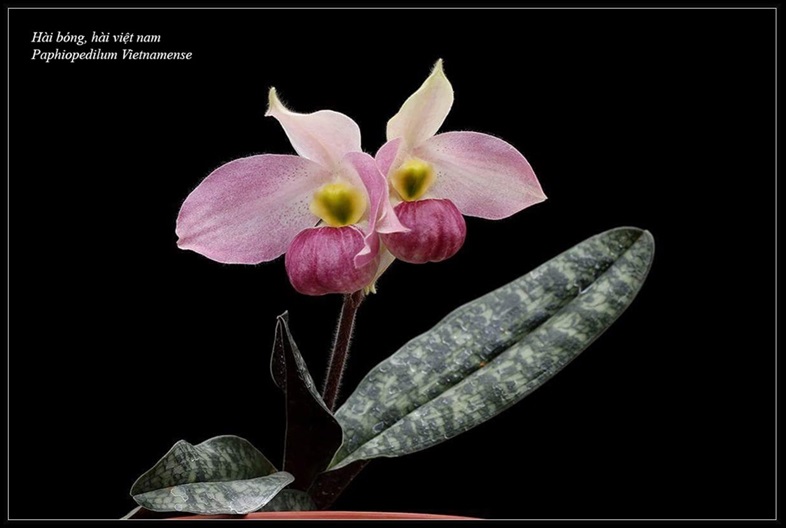
Learn about Vietnamese slipper orchids - slipper orchids.
Vietnamese slipper orchid or Vietnamese shiny slipper orchid (scientific name: Paphiopedilum vietnamense) is an orchid species endemic to Vietnam - only grows naturally in our country and does not exist naturally in any other country.
This orchid species was discovered and scientifically described for the first time in 1999 by Dr. Holger Perner - a German botanist, in the limestone mountains of Quan Ba district, Ha Giang province.
The Slipper orchid has a very narrow distribution range, only found in some limestone mountains in Ha Giang province, often living in crevices and wet limestone cliffs at an altitude of 1,200 - 1,500 m above sea level.
Vietnamese Paphiopedilum is an endemic, rare species, at high risk of extinction due to overexploitation. They are currently listed in the Vietnam Red Book and in Appendix I - CITES Convention - Prohibiting international commercial trade in all forms.
What is special about Vietnamese orchids?
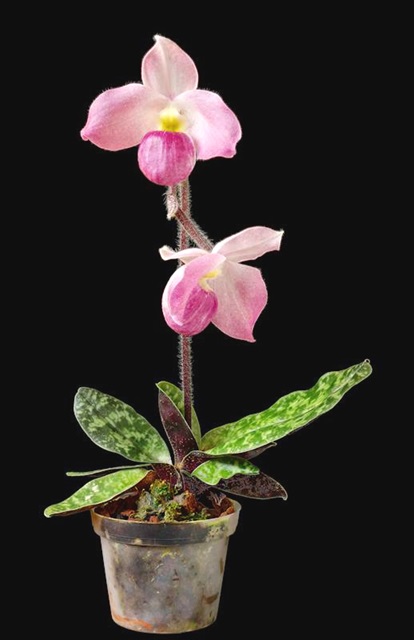
Characteristics of the stem, leaves and flowers of Vietnamese orchid.
Vietnamese slipper orchids are considered one of the most beautiful and unique varieties of slipper orchids in the world. Let's learn in detail about the shape of the stem, leaves, and flowers of this orchid species to see what's special about them.
Close :
- Very short stem, rhizomatous - leaves grow from one base point
- The plant grows into small bushes with many young shoots next to the mother plant.
- The body lies close to the ground, hidden under moss and humus.
Leaves :
- Growing close to the base, no clear leaf sheath or petiole
- Leaves are 15 - 25 cm long and 3 - 4 cm wide.
- The leaf surface is dark green with faint veins, the underside of the leaf is purple.
- Leaf edges are smooth, upper surface is slightly shiny.
Flower :
- Flowers grow from 20 - 30 cm long flower stalks
- Each tree only flowers once.
- Flowers have large diameters up to 8 - 10 cm
- The flower has two wide, horizontally spread petals, and a lip shaped like a fishtail facing down - the origin of the name "slipper orchid".
- The sepals are erect, large, round and lightly edged.
- The flower background is light pink, pinkish white with a dark purple-pink lip, shiny and smooth like wax, the sepals and petals on both sides are light pinkish white - harmonious and elegant colors.
- The flower has no distinct fragrance, only a faint scent can be smelled when standing close.
- Flowers bloom for quite a long time, 3 - 4 weeks.
Guide to growing and caring for Vietnamese slipper orchids
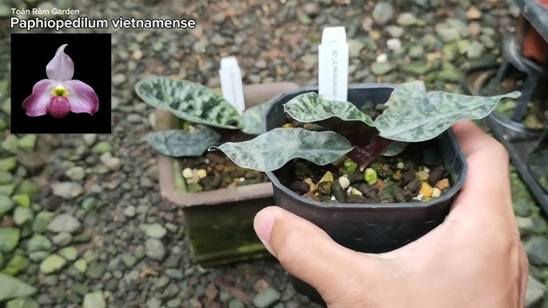
Instructions for planting and caring for Vietnamese orchids.
Vietnamese Paphiopedilum is very difficult to grow, especially for those who do not have much experience in growing and caring for wild orchids. Therefore, below we have compiled the most valuable experiences from choosing the breed to growing and caring for this orchid species, let's find out now.
Selecting varieties and substrates
Choosing the variety and substrate to grow slipper orchids seems simple, but this is an extremely important step, determining whether the plant can develop strong roots, grow well and bloom beautifully or not.
Choose the best variety:
- Only choose tissue cultured seedlings or shoots separated from healthy mother plants. Absolutely avoid buying trees harvested directly from the forest because this is a violation of the law.
- You should choose plants with 3-5 leaves, roots longer than 3 cm, and no signs of pests or diseases.
- After selecting the seedlings, soak them in a diluted Physan + B1 solution to disinfect and stimulate roots.
Choose the right substrate :
- Conditions: Choose a substrate that has good drainage and is relatively moist.
- Suggested growing medium: Pine bark + pumice + soft moss, crushed charcoal + processed coconut shell….
- Note: The growing medium needs to be soaked in lime water and then dried completely in the sun before planting orchids.
How to grow Vietnamese slipper orchids properly
Here is the simplest and most technically correct process of growing Vietnamese slipper orchids. We invite you to refer to it immediately.
- Step 1 : Place a layer of pumice and large charcoal at the bottom of the pot to increase drainage.
- Step 2 : Place the orchid root horizontally on the substrate surface, avoiding burying the substrate deeply.
- Step 3 : Use wire or bamboo sticks to fix the orchid roots.
- Step 4 : Place the pot in a cool place for the first week, only spray light mist at the base, do not water strongly.
Maintain ideal growing conditions
After successfully growing orchids, you need to maintain an ideal environment as follows to help the orchid pot grow strongly and bloom soon.
- Light : Scatters 50 - 70% natural light, avoids harsh sunlight
- Temperature : Ideal from 20 - 25 degrees Celsius
- Humidity : About 60 - 80%
- Ventilation : Plant in a place with light wind, avoid humidity, rain, strong sunlight, and strong winds.
Water properly
You need to pay attention to the watering stage because if you water too much, the orchid will be waterlogged and lead to root rot. If you water too little, the plant will not have enough moisture to grow. Please note the following:
- Dry, sunny season : Water 1 - 2 times/day, depending on humidity
- Rainy season : Water less, only water when the growing medium is dry.
Note: Should water early in the morning or cool afternoon, do not let water stay on leaves overnight to avoid leaf rot.
Fertilizer for each stage
For each stage of development of Vietnamese orchids, you need to fertilize with different types of fertilizer, suggestions are as follows:
- Development stage : NPK 30-10-10 + B1 fertilizer with dosage of 1g/1 liter of water, spray directly on leaves with frequency of 7-10 days/time.
- Flowering stage : NPK 10-30-20, NPK 6-30-30, 1g/1 liter
- Post-flowering stage : Apply organic fertilizer + chemical fertilizer to restore the plant, apply alternately to avoid the plant becoming resistant to fertilizer.
Pest control
To help orchid pots always grow well and be less susceptible to pests and diseases, you need to pay attention to daily disease prevention by referring to some of the following measures:
- Orchids with root rot and leaf spots: Spray Physan and Ridomil Gold once a month.
- Orchids have thrips and mealybugs: Spray Confidor, neem oil, use 70-degree alcohol to wipe orchid leaves, maintain a well-ventilated environment, not damp.
- Orchids have root fungus and white mold: Use a well-drained substrate and check the substrate condition regularly.
How much is Vietnamese orchid?
Currently, the slipper orchid is not commonly sold in our country because of its rarity and legal factors. However, based on international market prices, the price for this orchid will range from 1,100,000 - 1,500,000 VND/for an average plant, for newly sprouted plants the price is lower.
Note: Currently, Vietnamese slipper orchids are listed in CITES Appendix I and the Vietnam Red Book, so trading of plants of natural origin is completely prohibited. When buying, please pay attention to whether it is tissue cultured or natural.
Questions and answers about Vietnamese orchids
Are Vietnamese Paphiopedilum easy to grow?
No, this orchid is quite difficult to grow, especially for inexperienced people because it requires care and a sophisticated living environment.
What month does Vietnamese Cymbidium bloom?
Normally, Vietnamese orchids bloom in late winter - early spring (December - March), each year they only bloom once.
How are Vietnamese Paphiopedilum propagated?
There are two ways to propagate Vietnamese slipper orchids: separating the bush when the mother plant produces rooted branches or tissue culture (only suitable for propagation centers).
Are Vietnamese orchids fragrant?
No, this orchid does not have a strong scent, only a faint scent if you stand close. In general, the value of this orchid lies in the shape and color of the flower.
Beautiful Vietnamese orchid pictures
Right below is a collection of the most beautiful, unique and rare Vietnamese orchid images. We invite you to admire them so you can enjoy looking at this orchid more.
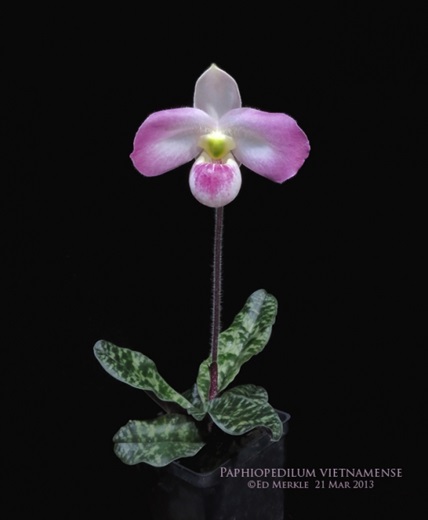
The unique beauty of Vietnamese orchids.
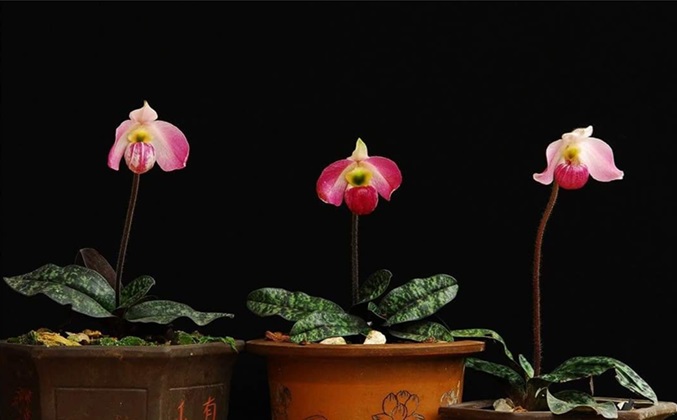
Vietnamese orchid pots are showing off their brilliant colors.
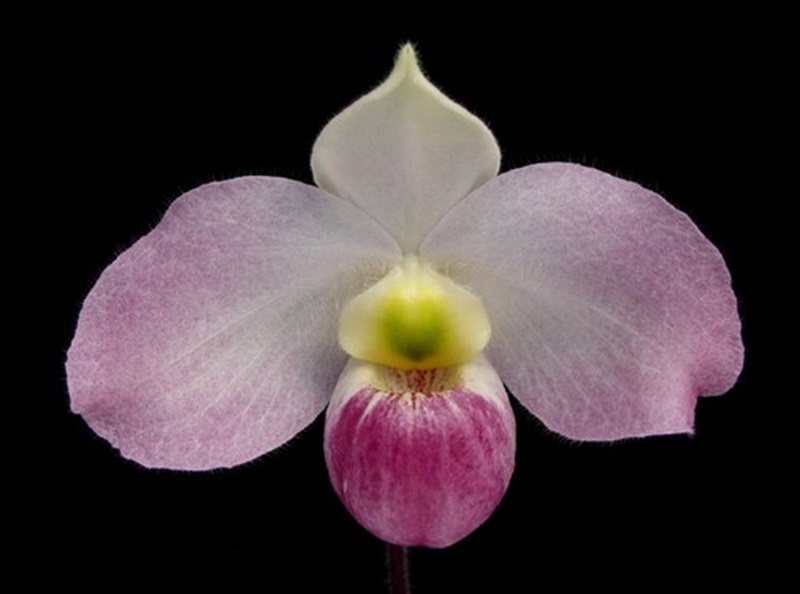
Close-up of the flower face of Vietnamese orchid.
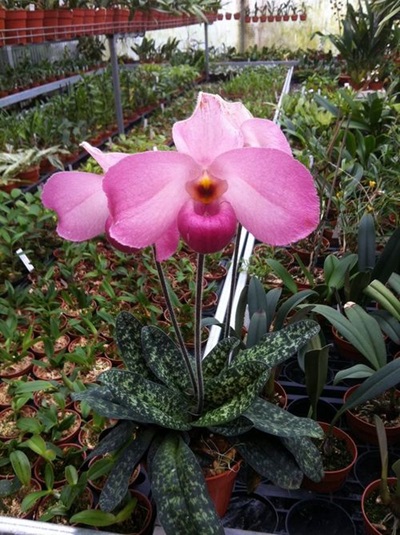
A pot of Vietnamese Cymbidium orchids in full bloom.
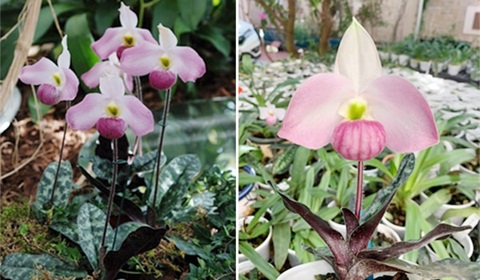
The unique beauty of Vietnamese orchids.
Vietnamese Paphiopedilum is not only a beautiful and rare wild orchid species, but it also represents the biodiversity and beauty of the limestone mountains in Northern Vietnam. The propagation and conservation of the shiny Paphiopedilum is not only valuable for collection but also partly protects the priceless natural heritage of our country.
Don't forget to visit the Blog section of orchid-vn.com to learn more about many other beautiful, unique, and strange species of slipper orchids, wild orchids, or hybrid orchids.
